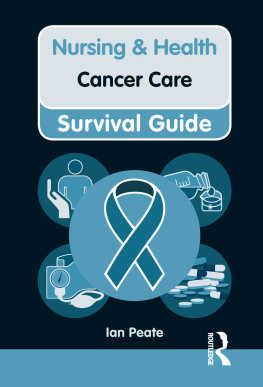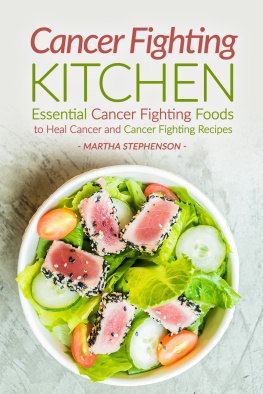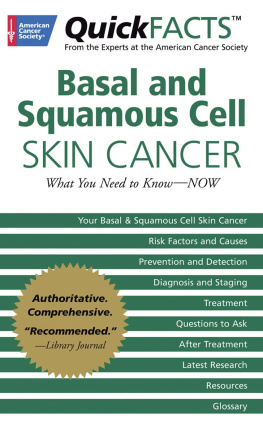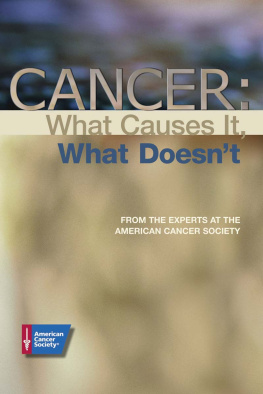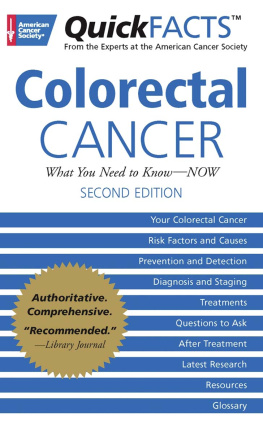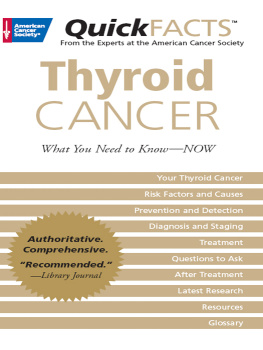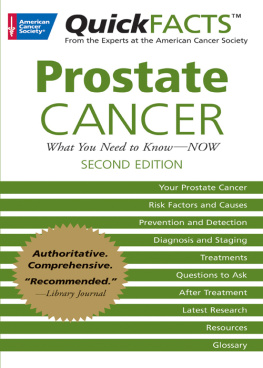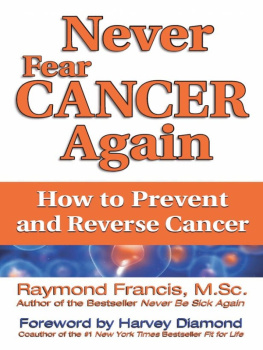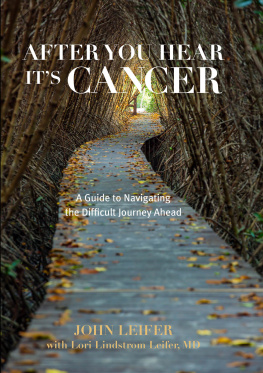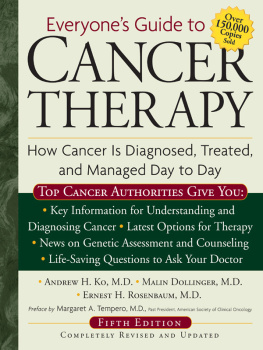
Nursing & Health
Survival Guide
Cancer Care
Ian Peate

First published 2012 by Pearson Education Limited
Published 2014 by Routledge
2 Park Square, Milton Park, Abingdon, Oxon OX14 4RN
7 11 Third Avenue, New York, NY 10017, USA
Routledge is an imprint of the Taylor & Francis Group, an informa business
Copyright 2012, Taylor & Francis.
The right of Ian Peate to be identified as author of this Work has been asserted by him in accordance with the Copyright, Designs and Patents Act 1988.
All rights reserved. No part of this book may be reprinted or reproduced or utilised in any form or by any electronic, mechanical, or other means, now known or hereafter invented, including photocopying and recording, or in any information storage or retrieval system, without permission in writing from the publishers.
Notices
Knowledge and best practice in this field are constantly changing. As new research and experience broaden our understanding, changes in research methods, professional practices, or medical treatment may become necessary.
Practitioners and researchers must always rely on their own experience and knowledge in evaluating and using any information, methods, compounds, or experiments described herein. In using such information or methods they should be mindful of their own safety and the safety of others, including parties for whom they have a professional responsibility.
To the fullest extent of the law, neither the Publisher nor the authors, contributors, or editors, assume any liability for any injury and/or damage to persons or property as a matter of products liability, negligence or otherwise, or from any use or operation of any methods, products, instructions, or ideas contained in the material herein.
ISBN : 978-1-4479-1204-0 (hbk)
British Library Cataloguing-in-Publication Data
A catalogue record for this book is available from the British Library
Library of Congress Cataloging-in-Publication Data
Peate, Ian.
Cancer care / Ian Peate.
p. ; cm. -- (Nursing & health survival guide)
Includes bibliographical references.
ISBN 978-1-4479-1204-0 (pbk.)
I. Title. II. Series: Nursing & health survival guides.
[DNLM: 1. Neoplasms--nursing--Handbooks. WY 49]
616.9940231--dc23
2012006036
Typeset in 8/9.5pt Helvetica by 35
contents
While effort has been made to ensure that the content of this guide is accurate, no responsibility will be taken for inaccuracies, omissions or errors. This is a guide only. The information is provided solely on the basis that readers will be responsible for making their own assessment and adhering to organisation policy of the matters discussed therein. The author does not accept liability to any person for the information obtained from this publication or loss or damages incurred as a result of reliance upon the material contained in this guide.
publishers acknowledgements
We are grateful to the following for permission to reproduce copyright material:
Figures
Figures on from Copyright Cancer Research UK. Taken from http://info.cancerresearchuk.org
In some instances we have been unable to trace the owners of copyright material, and we would appreciate any information that would enable us to do so.
Understanding cancer is essential if you are to help the patients you care for. Every two minutes somebody is diagnosed with cancer. Cancer is one the biggest killers in the UK. Over 250,000 people are diagnosed with cancer killing over 130,000 per year, remaining one of the central priorities for the NHS. The most common cancers in the UK are:
lung
prostate
breast
bowel (also known as colorectal cancer)
Cancer is the biggest killer worldwide and deaths associated with cancer are predicted to rise. Even if we do not develop cancer ourselves we are sure to know relatives or friends who have cancer. Cancer affects all of us.
Cancer is becoming more understood with more people being treated successfully but, cancer remains one of the most feared diseases. The term cancer can bring about feelings of hopelessness and helplessness in patients and sometimes in the people who care for them.
Cancer can be disruptive and in many cases it is a life-threatening process that can have an impact on the whole person as well as that individuals family and their friends. The role and function of the nurse must be based on the understanding that cancer is a chronic condition that has acute occurrences. Often the patient is treated as an outpatient and is typically treated with a combination of therapies. Just as important, the nurse must acknowledge that when caring for the person with cancer this involves:
health education
early detection
treatment
supportive care
There will be long-term follow-up and in a number of instances end of life care.
The term cancer is used for diseases in which abnormal cells divide without control, and can invade other tissues; in essence, a disruption in the regulation of growth of healthy cells occurs. Cells proliferate without normal organisation or normal control; cellular function becomes distorted, this is called carcinogenesis.
Cancer cells spread to other parts of the body through blood and lymph systems: this is known as metastases. The abnormal cells (the mutations) migrate from their original site invading nearby tissues and forming masses at distant sites of the body. Much progress related to unravelling the various steps associated with the processes related to carcinogenesis has occurred.
Cancer is a general term describing a group of related diseases. Every case of cancer is unique, with its own group of genetic changes and growth properties: it is essential to remember that the people who have cancer and their families are also unique. There are many main types of cancer. Cancer can be grouped into broader categories.
GROUP | FORMATION | EXAMPLE |
Carcinoma | Cancer beginning in the skin or tissues that line or cover internal organs | Lung Colon |
Sarcoma | Cancer beginning in the bone, cartilage, fat, muscle, blood vessels or other connective or supportive tissue; these are rare | Kaposis sarcoma Fibrosarcoma |
Leukaemia | Cancer starting in the blood forming tissues such as the bone marrow, causes large numbers of abnormal blood cells to be produced; they then enter the blood stream | Acute lymphoblastic leukaemia Chronic myeloid leukaemia |
Lymphoma | Cancer beginning in the cells of the immune system | Non-Hodgkin lymphoma |
Central nervous system | Cancers beginning in the tissues of the brain and spinal cord | Astrocytoma Intramedullary tumour |
There are a number of other terms used to describe cancer, for example, malignancy, tumour, neoplasm.
Cancer is not a single disease: it is an umbrella term.
There are hundreds of different types and sub types of cancer affecting young and older people.
Almost every tissue or organ in the body has the capacity to develop the disease.
There is no age group, ethnicity or gender resistant to cancer; these features play a role in the incidence of some particular cancers, frequency and severity.
Next page
